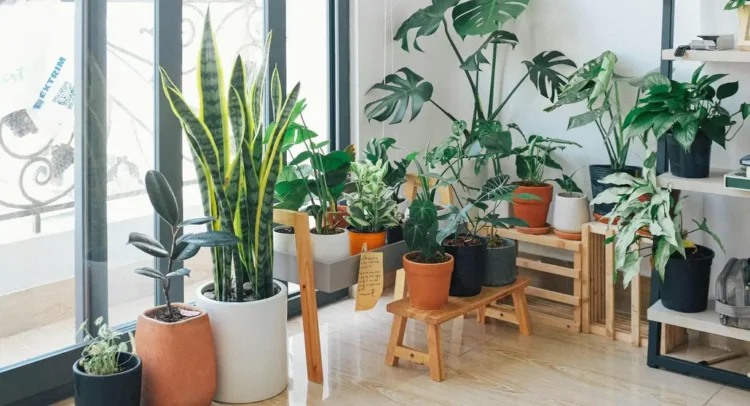Indoor plants can transform any living space by adding a splash of color and a breath of fresh air. However, maintaining their vibrancy can sometimes be a challenge. If your once-lush greenery is starting to look drab, don’t despair. Here are four solutions to revive your indoor plants and bring them back to life.
1. Ensure Proper Lighting
One of the most common reasons indoor plants decline is inadequate lighting. Most plants need abundant light to thrive, and if they’re not receiving enough, it can lead to wilting or foliage loss.
- Assess Light Levels: Pay attention to where you place your plants. South-facing windows usually provide the most light, while north-facing windows offer the least.
- Consider Grow Lights: If natural light is insufficient, consider investing in LED grow lights that mimic sunlight and promote photosynthesis.
Position your plants in areas of your home that receive the type of light they prefer, whether it’s bright, indirect, or shaded, and observe any positive changes.
2. Optimize Watering Techniques
Many indoor plants suffer from over-watering or under-watering. Understanding your plants’ specific needs and adjusting your watering habits accordingly is crucial.
- Check Soil Moisture: Use your finger or a moisture meter to check the soil’s dampness. The soil should be dry about an inch deep before you water again.
- Water Correctly: Ensure that water reaches the roots by watering thoroughly until you see excess draining from the pot.
- Adjust Frequency: As a general rule, reduce watering in cooler months and increase during growth periods in the spring and summer.
Remember, different plants have different water needs. For example, succulents prefer to dry out between waterings, while ferns like consistently moist soil.
3. Nutrient Boost with Fertilizers
Nutrients play a vital role in plant health. If your plants aren’t getting enough from the soil, they might exhibit poor growth or yellowing leaves.
- Identify Needs: Use an all-purpose, balanced fertilizer for most plants, but be sure to follow specific plant requirements if known.
- Application: Apply fertilizers during the growing season, usually spring and summer, and cut back during fall and winter.
- Avoid Over-fertilizing: Too much fertilizer can cause more harm than good, leading to root burn or salt build-up in the soil.
By nourishing your plants with the appropriate fertilizer, you can sustain lively growth and vibrant leaves.
4. Pruning and Maintenance
Regular plant maintenance is essential to keep your indoor foliage in excellent condition.
- Trim Dead or Diseased Parts: Prune away any dead or unhealthy leaves and stems to stimulate new growth.
- Ensure Cleanliness: Dust plant leaves frequently to allow for maximum light absorption.
- Repot If Necessary: If your plant outgrows its pot, repotting may prevent it from becoming root-bound, which can hinder growth.
Pruning isn’t just about removing the old, but also about letting the new break through and flourish. As you remove unwanted parts, you encourage a healthier and more robust plant.
Reviving your indoor plants may require a bit of effort and commitment, but the results are remarkably rewarding. With the right combination of lighting, watering, nutrition, and maintenance, your plants will not only come back to life but thrive, enhancing your home’s ambiance and bringing joy to your indoor spaces.

















